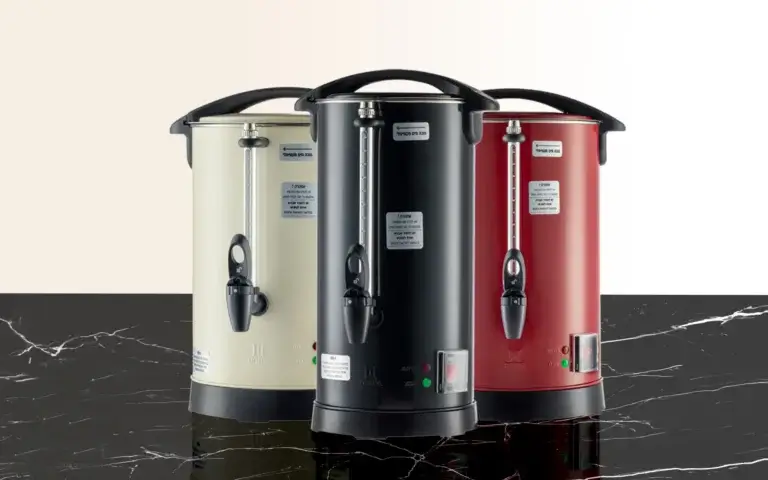Kashering a hot water urn is an important process for maintaining the kashrut of your kitchen appliances, particularly if the urn has been used for milky or meaty food or during the year (to be used on Pesach). Whether you’re preparing for Passover or simply ensuring that your urn is kosher, this guide provides clear instructions to help you kasher it properly.
1. Determine if Kashering is Needed
Before beginning the kashering process, it’s essential to assess whether the urn requires kashering. Here are some key considerations:
If the urn was only used for heating water and never came into direct contact with chametz (leavened products) or milky/meaty food, kashering may not be necessary.
If the urn was used to heat liquids such as soup or pasta, which could have contained milky or meaty ingredients, it will need to be kashered.
If the urn was used to pour hot water directly onto milky or meaty food, kashering is definitely required.
Understanding the previous use of your urn will help determine whether the process is needed.
2. Clean the Urn Thoroughly
Proper cleaning is an essential first step in kashering any appliance:
Empty the urn completely, ensuring there is no water or food left inside.
Scrub the urn thoroughly, paying special attention to areas where residue or buildup may accumulate, such as around the spout and inside the urn.
Let the urn sit unused for 24 hours. This ensures that any food absorbed into the urn has cooled and is no longer active.
A clean urn will make the kashering process more effective.
3. The Kashering Process
Once the urn is clean and prepared, it’s time to kasher it. There are two main methods of kashering a hot water urn:
Hagalah (Boiling Water Purging)
Hagalah involves purging the urn with boiling water to remove any absorbed taste or residue.
Fill the urn to the top with clean water.
Boil the water until it reaches its highest temperature. This ensures that the urn reaches the necessary temperature for kashering.
Overflow the water slightly, if possible, to ensure that the rim is also kashered. You can also pour boiling water over the spout to kasher it.
Empty the urn completely, ensuring no water is left behind.
Irui (Pouring Boiling Water)
If the urn cannot be subjected to hagalah, perhaps due to materials or design, irui is an alternative method.
Boil water in a separate pot or kettle.
Pour the boiling water over the interior of the urn, ensuring that it covers all surfaces, including the spout.
Both methods are effective for kashering a hot water urn, but if possible, hagalah is the preferred method due to its thoroughness.
4. Additional Considerations
Plastic Spouts: If your urn has a plastic spout, it’s important to consult a rabbi. Plastic may require different kashering procedures, as it absorbs and does not release (according to most opinions).
Kashering for Pesach: For those preparing for Passover, it is recommended to have a separate urn reserved specifically for Pesach. This avoids any concerns of chametz contamination and ensures peace of mind.
Conclusion
Kashering a hot water urn may seem like a complicated process, but with the right steps, it can be done effectively. Whether you’re preparing for Pesach or simply maintaining the kashrut of your kitchen appliances, following the proper kashering procedures ensures that your urn remains in line with Jewish dietary laws. Always be sure to consult with a rabbi if you’re unsure about specific materials or methods.
Nachman Harris. Kosher Expert.
Available for any of your questions






